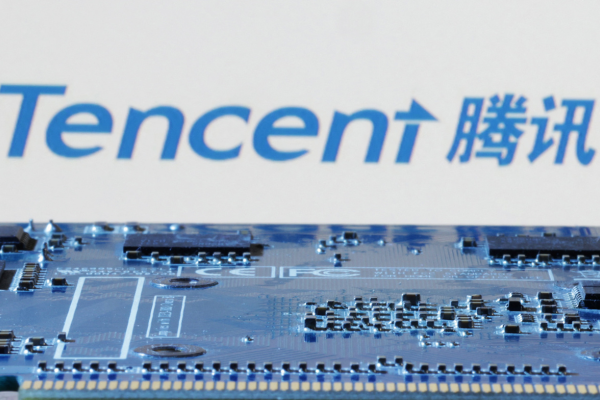Coping with data deluge

Eric Bassier at Quantum explains why storage innovation is essential for business success
The rapid and unrelenting growth in the collection, storage and use of unstructured data presents significant challenges for every data-centric organisation worldwide.
The sheer volume of information in circulation is difficult to grasp, with the total amount of data created, stored and consumed globally predicted to exceed 180 zettabytes by 2025. For context, this is a figure roughly equivalent to the storage capacity of about 180 billion smartphones, each with 1 terabyte of storage.
This data explosion can be attributed to a variety of factors including the ongoing and accelerating adoption of digital technologies, IoT devices and the ever-increasing use of video content. Faced with the need to build data-led insight into everything from product innovation to customer interaction, enterprises across the economy face increasing pressure to manage, analyse and – crucially – store their unstructured data assets more efficiently.
But there’s a problem. Traditional storage systems, many designed over two decades ago, are ill-equipped to handle the demands of today’s data-intensive businesses. In particular, they often lack the necessary flexibility, scalability and performance required to manage the influx of data.
As a result, many organisations have been stuck in an endless cycle of expanding and upgrading their systems; bolting on more products to meet their needs, resulting in storage architectures that are bloated and inefficient.
It’s not uncommon for larger organisations to have a proliferation of different types of systems, or even different storage platforms for specific use cases – adding complexity to their infrastructure at a time when it is very difficult to hire IT personnel to manage it all.
Harnessing NVMe flash for data-intensive applications
The list of industry sectors and use cases that are dependent on high performance storage technologies is growing all the time. From demanding enterprise applications to gaming, digital special effects, augmented and virtual reality and digital twinning, organisations everywhere are looking for storage technologies to evolve so that they remove the limitations seen across many current enterprise systems.
For contemporary applications and workloads where performance demands are growing all the time, low latency and high IOPS performance is a must-have.
In addition, IT teams need the ability to scale their infrastructure according to need and often at short notice. These requirements must also be delivered alongside native cloud interoperability.
One of the key building blocks of new solutions, built for the next era of digital growth, is NVMe flash, which for some time, has been predicted to establish itself as the “enterprise storage platform of choice.” Unlike traditional SAS and SATA technologies, NVMe is specifically designed for solid-state memory technologies – a capability that makes it possible to process not only thousands but millions of concurrent operations.
Many legacy systems cannot fully utilise flash-based memory technologies – a shortcoming which can hinder an organisation’s ability to adapt and grow. In addition, some legacy technology vendors have tried to bolt-on flash storage to their systems in an attempt to boost performance.
The issue here is that the accompanying software technologies weren’t built to harness the potential of flash, while object-based storage solutions designed for flash are limited to running on specialised hardware, and as a result won’t run natively in the cloud.
In contrast, by leveraging cutting-edge application frameworks and cloud-native architectures, NVMe flash can help deliver a seamless and easy-to-use experience for IT teams. Moreover, by eliminating the limitations of hardware-centric designs, these platforms enable businesses to adapt to their evolving storage needs efficiently.
One significant challenge businesses face is the integration of all-flash storage solutions with specialised hardware and cloud-native environments. Building an architecture that embraces the latest flash technologies can provide consistent low-latency performance, regardless of scale.
This approach enables businesses to benefit from inline data services such as deduplication, compression and metadata tagging, thereby accelerating AI and ML data processing.
Furthermore, the use of familiar and proven cloud technologies, such as microservices and container orchestration platforms, ensures simplicity and ease of deployment across various environments. By leveraging standard, high-volume flash storage servers, IT teams can quickly adopt the latest hardware and storage infrastructure to address their future needs.
Looking ahead, businesses must act on the challenges posed by the explosion of data and the limitations of traditional storage systems.
By adopting modern, all-flash storage platforms, they can efficiently manage their data storage needs, improve performance and scale effectively – capabilities that are becoming mission critical to compete in the data-driven economy.
Eric Bassier is Senior Director, Products at Quantum
Main image courtesy of iStockPhoto.com

Business Reporter Team
Related Articles
Most Viewed
Winston House, 3rd Floor, Units 306-309, 2-4 Dollis Park, London, N3 1HF
23-29 Hendon Lane, London, N3 1RT
020 8349 4363
© 2024, Lyonsdown Limited. Business Reporter® is a registered trademark of Lyonsdown Ltd. VAT registration number: 830519543





